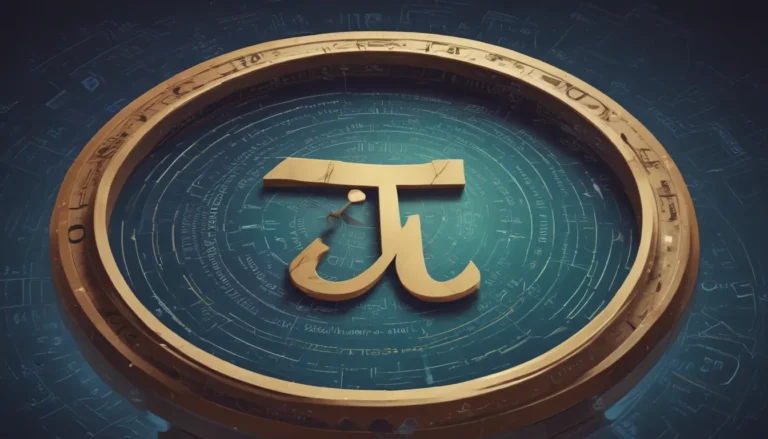A Note About Images: The images used in our articles are for illustration purposes only and may not exactly match the content. They are meant to engage readers, but the text should be relied upon for accurate information.
Welcome to the captivating world of P-type semiconductors, where innovation meets functionality to power the electronic devices that shape our daily lives. From their unique composition to their diverse applications, P-type semiconductors play a crucial role in advancing modern technology. In this article, we will explore 18 mind-blowing facts about P-type semiconductors that will broaden your understanding of these essential components and their impact on the world around us. So, buckle up and get ready to embark on a journey through the intriguing realm of P-type semiconductors!
Unveiling the Mysteries of P-Type Semiconductors
P-type semiconductors, such as boron and gallium, are distinguished by their surplus of positive charge carriers known as “holes.” These holes are created by introducing impurities into the semiconductor crystal lattice, giving P-type semiconductors their unique characteristics.
The Versatility of P-Type Semiconductors
P-type semiconductors are not limited to a single application. They are used in a wide range of electronic devices, from diodes and transistors to solar cells and sensors. Their ability to conduct electricity in one direction makes them indispensable in modern technology.
The Role of P-Type Semiconductors in Electronic Devices
P-type semiconductors play a crucial role in the creation of diodes and bipolar junction transistors (BJTs). By forming p-n junctions within these devices, P-type semiconductors enable the controlled flow of current, amplification of electrical signals, and other essential functions.
Unique Properties and Characteristics of P-Type Semiconductors
P-type semiconductors exhibit positive Hall coefficients and have lower electron mobility compared to N-type semiconductors. Their positive electron affinity and unique hole mobility characteristics make them ideal for various applications in the field of electronics.
Applications of P-Type Semiconductors
P-type semiconductors are used in the production of solar cells, logic gates in digital circuits, light-emitting diodes (LEDs), and integrated circuits (ICs). They are also employed in sensors, thermoelectric devices, thermistors, optoelectronic devices, and microelectromechanical systems (MEMS).
Unlocking the Potential of P-Type Semiconductors
By understanding the properties and applications of P-type semiconductors, scientists, engineers, and technologists can harness their incredible potential to drive innovation and shape a brighter future. These essential components continue to push the boundaries of what is possible, revolutionizing industries and improving our daily lives.
Frequently Asked Questions
- What is a P-Type Semiconductor?
-
A P-type semiconductor is a material doped with impurity atoms to increase the number of available “holes” for electron movement, resulting in a surplus of positive charges.
-
How Does Doping Work in P-Type Semiconductors?
-
Doping in P-type semiconductors involves adding impurities, such as elements from Group III of the periodic table, to create “holes” where electrons can move, contributing to the positive charge.
-
What Are Some Common Applications of P-Type Semiconductors?
-
P-type semiconductors are used in transistors, diodes, solar cells, integrated circuits, sensors, thermoelectric materials, and various other electronic devices.
-
How Do P-Type Semiconductors Contribute to P-N Junctions?
-
P-type semiconductors can be combined with N-type semiconductors to create p-n junctions, allowing the controlled flow of current by balancing positive and negative charges.
-
Can P-Type Semiconductors Conduct Electricity?
-
Yes, P-type semiconductors can conduct electricity by carrying positive charges (holes) and exhibiting lower conductivity compared to N-type semiconductors.
-
Are P-Type Semiconductors More Expensive Than N-Type Semiconductors?
-
The cost of P-type semiconductors is generally comparable to N-type semiconductors, depending on factors such as material, quality, and market demand.
-
How Do P-Type Semiconductors Contribute to Solar Energy?
- P-type semiconductors are essential for generating electricity from sunlight in solar cells by absorbing photons, creating electron-hole pairs, and initiating the flow of current.
Conclusion: Embracing the Future with P-Type Semiconductors
In conclusion, P-type semiconductors hold the key to unlocking a world of possibilities in electronics and beyond. Their unique properties and applications make them indispensable components in modern technology, driving innovation and progress in various industries. By exploring the fascinating world of P-type semiconductors, we can continue to push the boundaries of what is achievable and shape a brighter future for generations to come.
Join us on this journey through the captivating world of P-type semiconductors, where each discovery brings us closer to a future defined by innovation, efficiency, and endless possibilities. Together, let’s embrace the limitless potential of electronic materials and pave the way for a world transformed by the wonders of solid-state physics.





